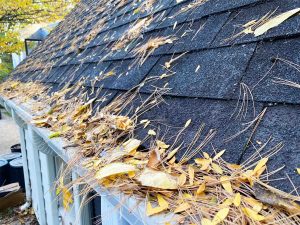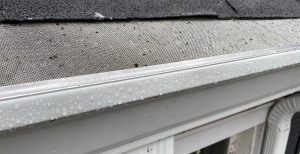In March 2020, two runs of dirty, old, mangled, 5” gutters were removed from my garage and replaced with 12 new sections of 6” gutters. Each gutter has its own downspout. Six sections of gutter are located on both the north and south sides of the garage.
The Ultimate Gutter Guards Challenge 2021 is running for one calendar year. That way, each gutter guard will be exposed to Mother Nature in spring, summer, fall and winter. By extending the tests for 12-months, we’ll be able to accurately assess the gutter guards in the worst conditions and provide you with an accurate analysis of how the guards performed.
The written word will be augmented by video. Lots of video that will go into far greater detail than I can capture on paper. I will climb the ladder every week or two to see what’s going on and report my findings.
In one or two early videos, I referred to the north side of the garage having 5 sections of gutter in some cases and 6 sections at other times. Apparently, I cannot count! There are six, not 5, sections of gutter on the north side just as there are 6 sections of gutter on south side of the garage.
In a quest to make the gutters butt up against each other, the installers varied the lengths a bit. The 4 middle sections are equal in length and are bookended with 2 sections that are slightly longer. There are a few inches difference between the size of the gutters on the ends when compared to the four middle sections of gutter. This shouldn’t have any material effect on the testing the debris that lands on the gutter guards, as we’re only visually inspecting the debris.
If we decide to calculate debris in some other way, then we’ll factor the length of the gutter guards into the formula. When we test the water flow rates, we’ll make allocations for the different lengths of the gutters to ensure everything is being calculated correctly and interpreted properly.
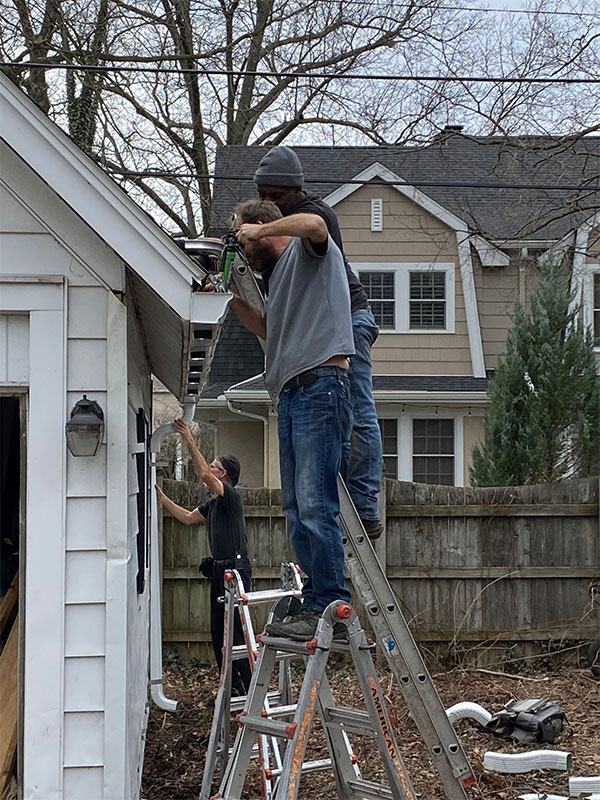
The gutters are located on the north and south sides of the garage. The front of the garage faces east and the rear faces west. All the gutter guards have been installed and are positioned as follows:
North side of garage; Position 1-6, west to east:
- MasterShield Micro Mesh
- LeafFilter Micro Mesh
- LeafSolution Micro Mesh
- LeafLock Micro Mesh
- GutterGlove Easy-On Micro Mesh
- Semco Screen Mesh (Referred to as Clean Mesh and MicroScreen in videos)
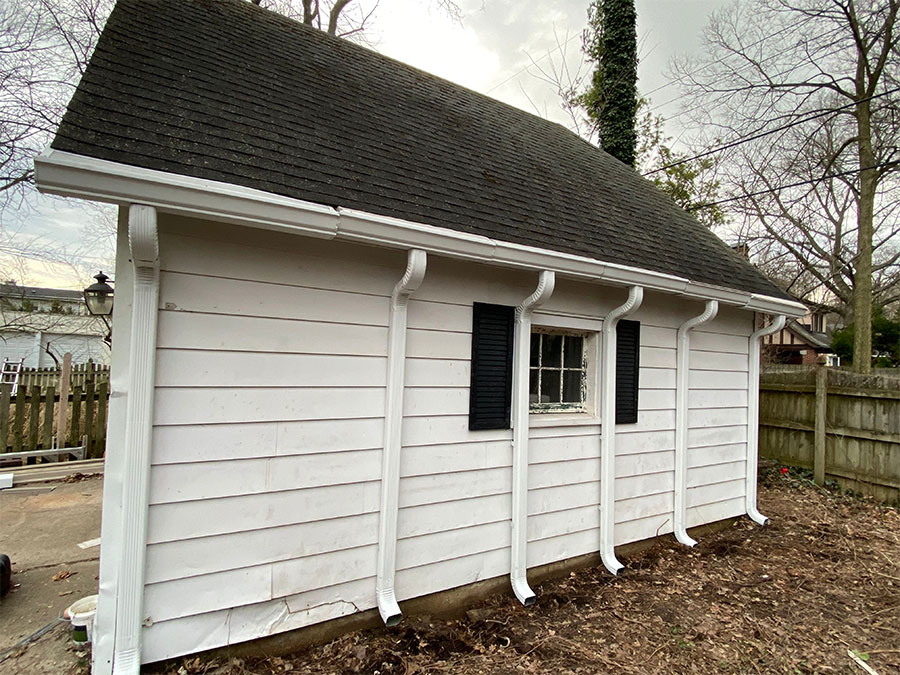
South side of garage; Position 1-6, west to east:
- MasterShield Micro Mesh
- LeafFilter Micro Mesh
- GutterGlove Pro Micro Mesh
- LeafLock Micro Mesh
- Diamond Micro Mesh
- LeaFree Solid Gutter Cover
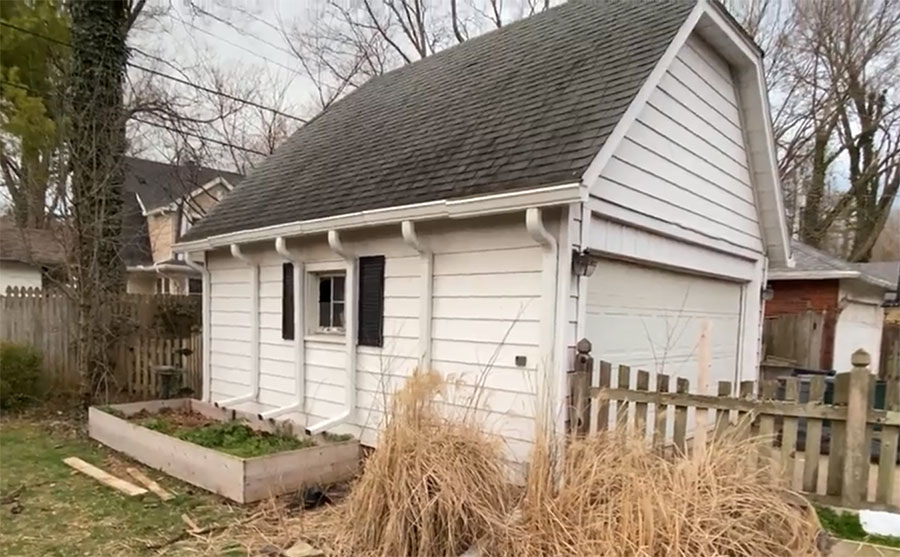
We elected to test three of the gutter guards – MasterShield, LeafFilter and LeafLock – on both sides of the garage. The other gutter guards are installed on either the north or south side of the garage.
For the systems that are on both sides of the garage, you will quickly learn how the same gutter guard can perform differently on the same home (or in this case, garage).
Let’s dig into the different gutter guards in more detail.
MasterShield
This was the 2nd generation micro mesh gutter guard invented by Alex Higginbotham. Arriving on the scene about 2004, it was an improvement on Alex’s first invention, LeafFilter. Alex undoubtedly took his learnings from LeafFilter and applied the improvements to MasterShield.
MasterShield is a 2-piece gutter guard made from roll-formed aluminum. It’s approximately 8.5” wide and 48” long. It’s a single piece of .019-gauge aluminum that is comprised of a solid panel on the top side that slides up under shingles. Its mid-section – where the screen resides — has a series of downward dips in the metal and slotted holes to accept the water when it falls through the screen.
The front of the panel that attaches to the lip of the gutter has a narrow channel with weep holes in it to capture water that falls from sky or drips off the screen. This is the last line of defense for water to pass through the panel and into the gutter before it would drip-off the top edge of the gutter. At the leading edge of the panel, the metal is bent in a downward fashion to form a drip edge. The section of the panel that accepts water is covered by a fine, 50-micron stainless steel screen that includes three strips of copper woven into the screen. The copper resists the formation of algae, lichen and moss.
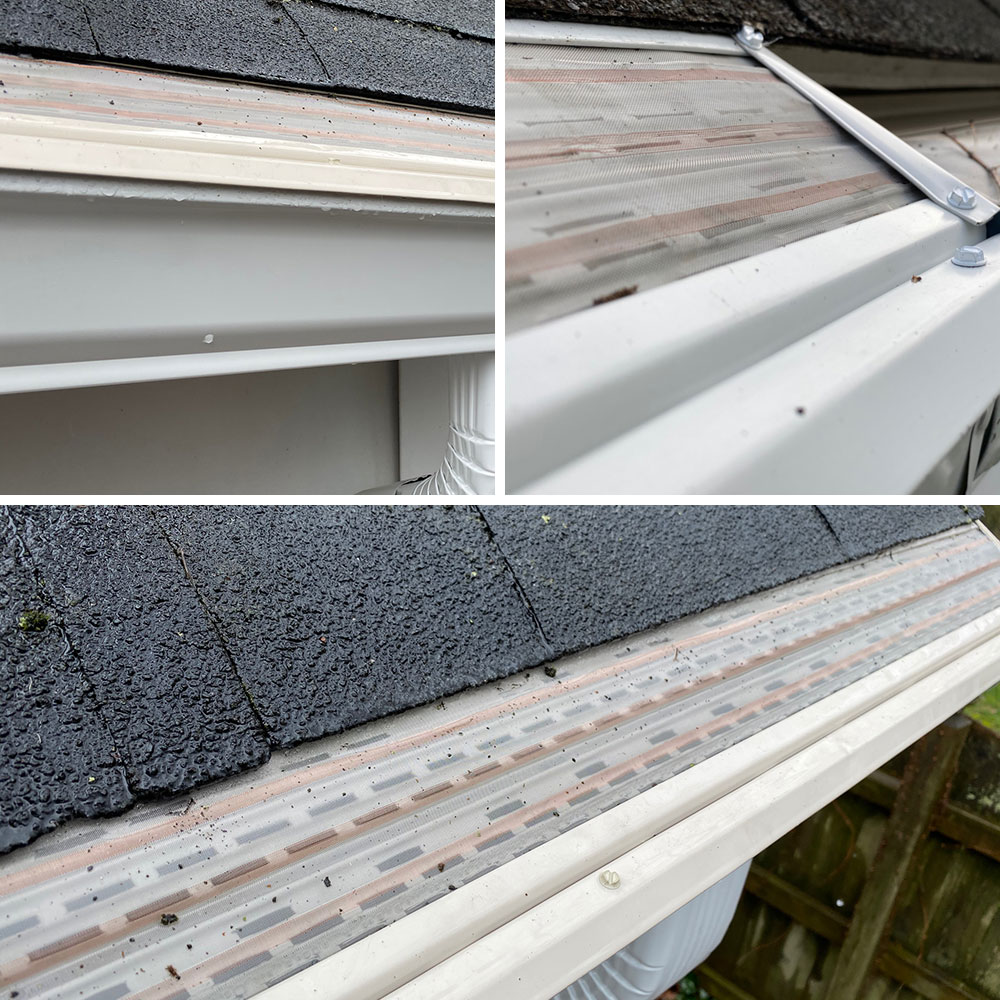
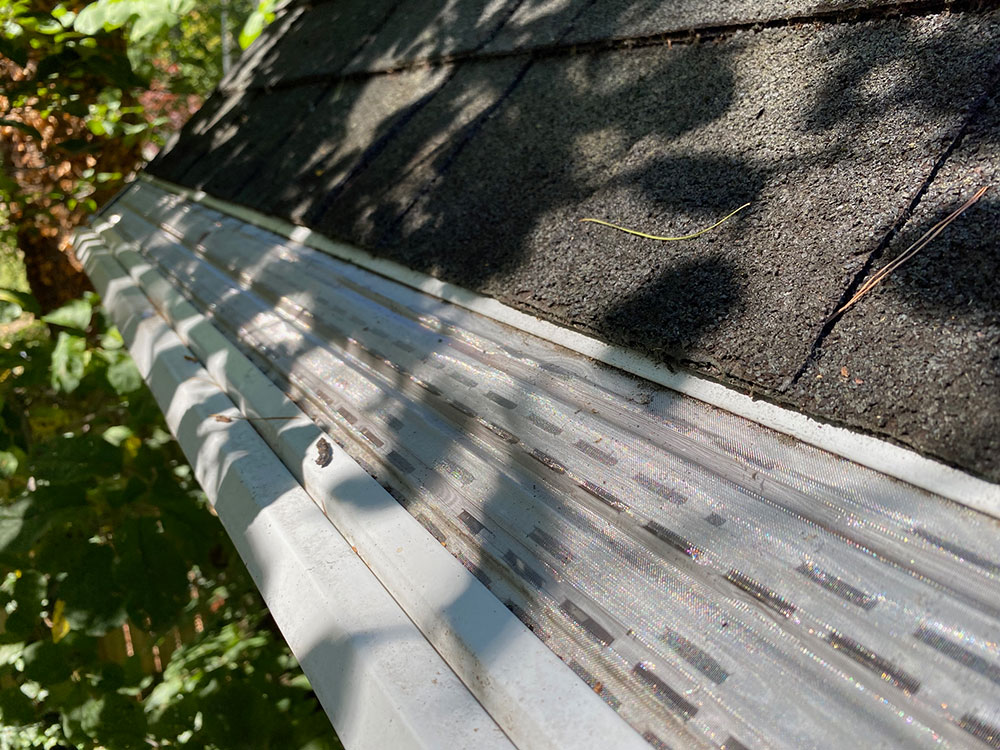
In situations where a home has a standing seam metal or flat rubber roof, there’s no way to “slide” the gutter guards under anything because most metal roofs have a built-in drip edge that blocks anything from sliding under the roof and, naturally, the flat rubber roof is just that. In these and similar situations, the rear metal panel can be trimmed and then bent upward to accommodate screwing the panel into the fascia board.
Since MasterShield is made from roll-formed aluminum, it is available in a number of the popular colors and copper.
Testing location: North and South side gutters
LeafFilter
Alex Higginbotham’s first gutter guard invention, LeafFilter entered the market around 2000. Alex created the micro mesh gutter guard industry with his revolutionary design by developing a very fine woven stainless-steel micro mesh screen to capture water and repel leaves and debris. Having received several patents on his screen technology, Alex pioneered the concept of micro mesh gutter guards.
LeafFilter began as a 3-part system of a plastic frame, a channel system, and a fiberglass mesh screen. The frame was installed across the gutter run in 5-foot long sections, the channel system spanned between the panels and then the screen was inserted down a channel across all the panels. With so many moving parts and a screen that broke down under UV light, this proved to be a short-lived solution that was replaced by a simpler design that is available to this day.
LeafFilter is now a 2-part system that comprises of a PVC (Poly Vinyl Chloride) frame that has a series of built-in channels and a stainless steel mesh screen that inserts into top and bottom slots above the channels.
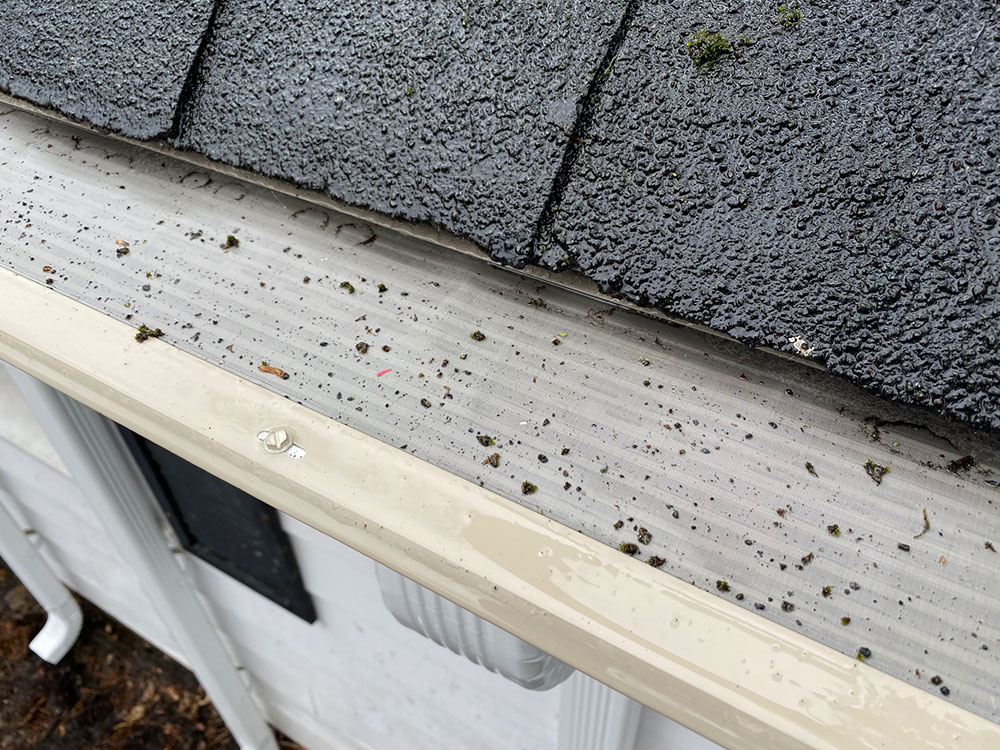
The frame is made from an extruded PVC. It is manufactured in the same way you or your kids squirted Play-Doe though a shape forming machine. It comes in 5-foot lengths and is 5” or 6-inches wide, depending on the gutter size.
The screen, which has been slightly modified from its earliest days, is a semi-rigid stainless-steel screen. It is advertised as being 50-microns; however, we no longer believe that is the case. The screen openings are visibly wider today than it was 5- to 10-years ago when the screen was more like a tightly woven fabric.
In those days, the screen was secured into place with a bead of caulk where the screen intersected with the plastic panel. Today, it’s simply inserted within the channel of each 5’ section of the frame and extended roughly 1” past each end of the frame. When the gutter guards butt up against each other, the screen will act as a barrier to fill the void between the plastic panels.
The panel is designed to reside within the gutter, and it is available to fit 5-inch and 6-inch gutters. The panel has a built-in slope, so the rear of the panel is taller than the front of the panel. Because LeafFilter sits inside the gutter, it must be supported by gutter hangers. On most homes, gutter hangers are spaced every 16- to 30-inches. If LeafFilter is not adequately supported, it will collapse inside the gutter, so additional brackets are installed inside the gutters to ensure that it is properly supported.
The leading edge of the panel hooks to the front lip of the gutter and then it has a drip edge that extends past the front edge of the gutter. LeafFilter is secured to the front lip of the gutter. There are a series of 4 slots cut out of the plastic into which the installer inserts ½” zip screws. The larger slots allow for expansion and contraction that occurs with vinyl and plastics. It only secures to the front of the gutter as attempting to screw it to the fascia board would result in the rear upward flange breaking.
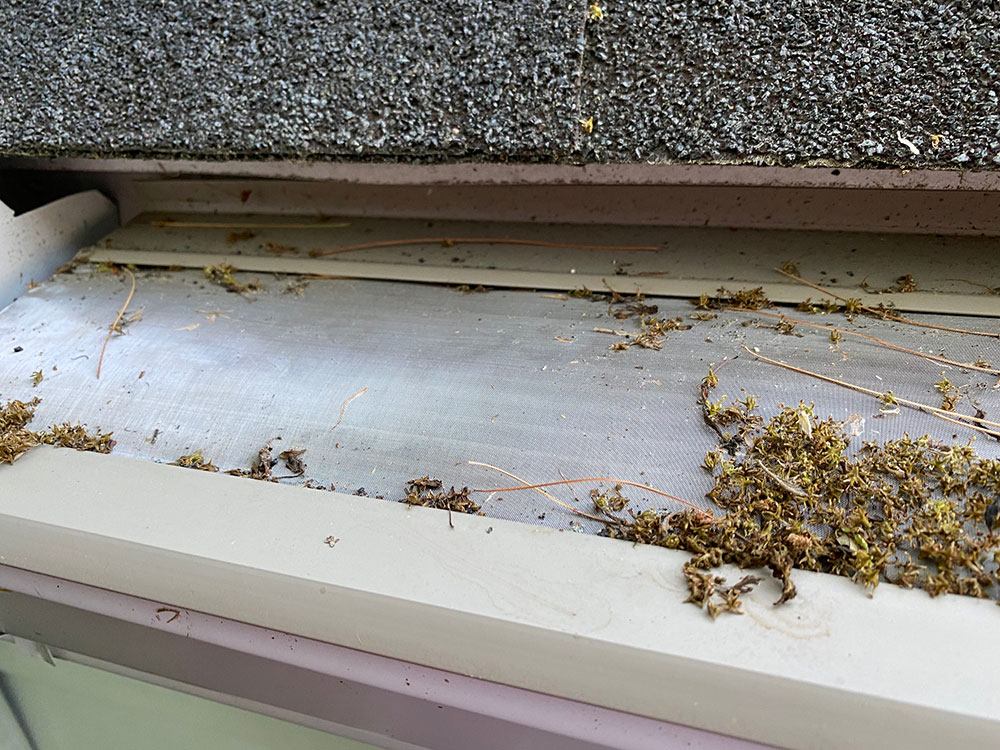
LeafFilter is available in 3-4 colors, including white, clay and grey. It is not available in browns or darker shades because darker shades of PVC are more likely to warp.
LeafFilter was one of two micro mesh gutter guards tested by Consumer Reports in September 2010. It received the #1 ranking for Professionally Installed gutter guards, besting solid gutter covers and DIY screens available from big box home improvement stores. Interestingly enough, it was tested alongside another micro mesh gutter guard, GutterGlove Pro, that we’re also testing.
Testing location: North and South side gutters
LeafSolution
LeafSolution is a 4-piece gutter guard made from roll-formed aluminum and an expanded metal frame that supports the screen. The metal panels are separate pieces of aluminum – one at the top and one at the bottom. It has a rigid, expanded aluminum screen that spans between the rear piece of aluminum and the strip of aluminum that is the leading edge of the panel.
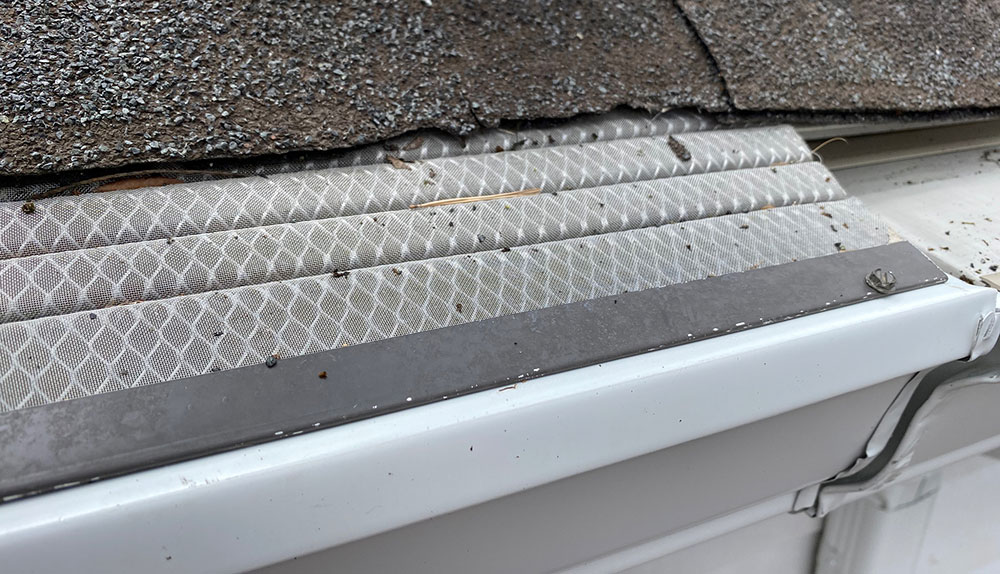
The expanded aluminum screen is fashioned in a way to create a series of 3 downward dips. A 50-micron screen is hemmed between the solid metal panels and welded into place on top of the expanded aluminum screen. The micro mesh screen follows the downward dips and fits snugly against the expanded aluminum screen to form a cohesive product. The theory behind the dips is that it helps slow the forward flow of water, better forcing it into the gutters.
LeafSolution is designed to slide under the first course of shingles and hooks to the front lip of the gutter. It is secured to the front edge of the gutter with sheet metal screws. The weight of the shingles holds it in place in the back. When the gutter guard cannot slide under the first course of shingles, the rear panel can be trimmed, and a rear, upward flange can be formed in order to screw the panel into the fascia board.
Leaf Solution is available in a number of colors, including white, brown, clay, black and dark bronze.
Testing location: North side gutters
LeafLock
LeafLock – that’s what we call it – is another invention from Alex Higginbotham. Officially known as GutterLove and Pine Screen (the manufacturer can’t make up its mind), it’s a 3-part system that comprises of a rear piece of aluminum, a stainless-steel micro mesh screen and a forward piece of aluminum that hooks to the front lip of the gutter.
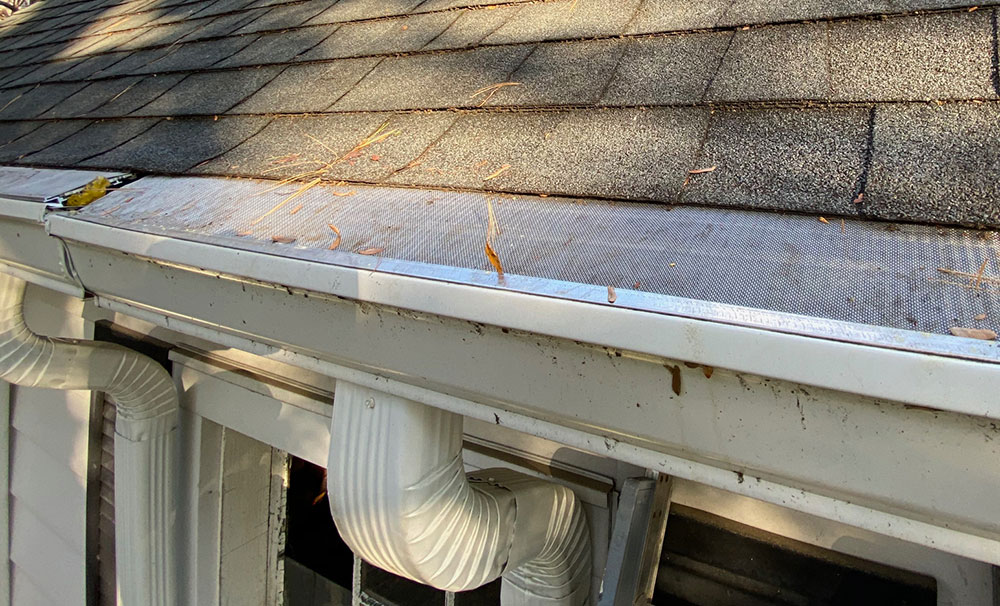
The design is simple. The rear facing metal is available in two styles that either screws to the fascia board or installs under the first course of shingles. The micro mesh screen has a series of vertical ribs that strengthen the screen and direct water into the gutter. The front, leading edge of the gutter guard has another slender piece of aluminum that binds the screen and connects to the front edge of the gutter.
While its design is straightforward, it has a couple of features not found on other systems in this class. Most notably, it has a downward flange on the leading edge of the gutter guard frame that helps direct water into the gutter more effectively than systems without this feature.
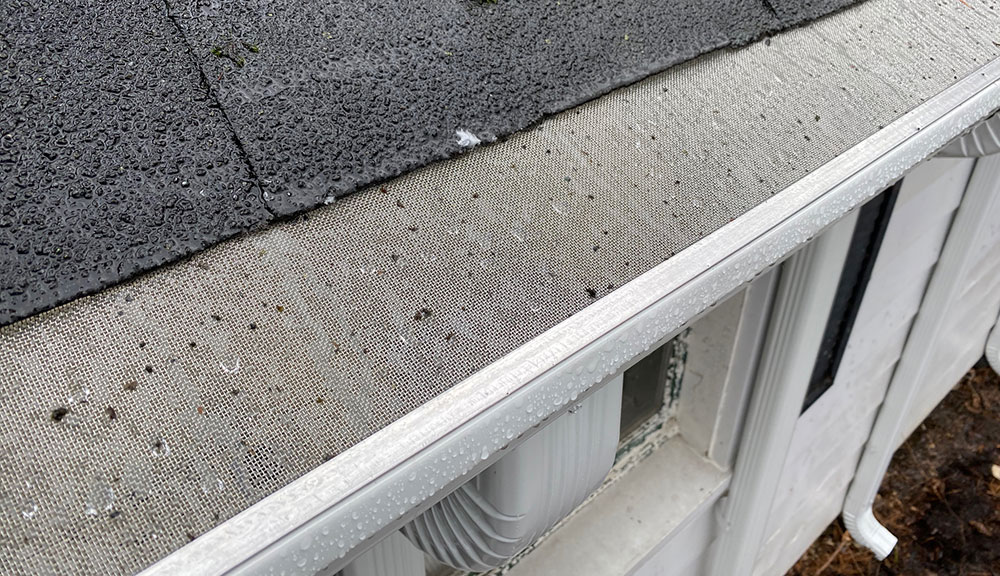
The ribbed screen allows the water to follow the path of the screen forward before it drops into the gutter. This ribbing also strengthens the screen. When selecting the version that screws to the front and rear of the gutter, the entire gutter guard will be considerably strengthened.
By including 2 designs within one product, LeafLock is more versatile out-of-the-box than other gutter guards because it can be installed on any roof type without modification.
LeafLock is available with a mill finish frame and stainless-steel screen.
Testing location: North and South side gutters
GutterGlove Easy-on
Sold as the DIY version of LeafBlaster, Gutter Glove markets this micro mesh gutter guard under several different brand names. It’s available at big box stores such as Costco (Easy-on), Lowe’s (Atlas), and Home Depot (Gutter Guard).
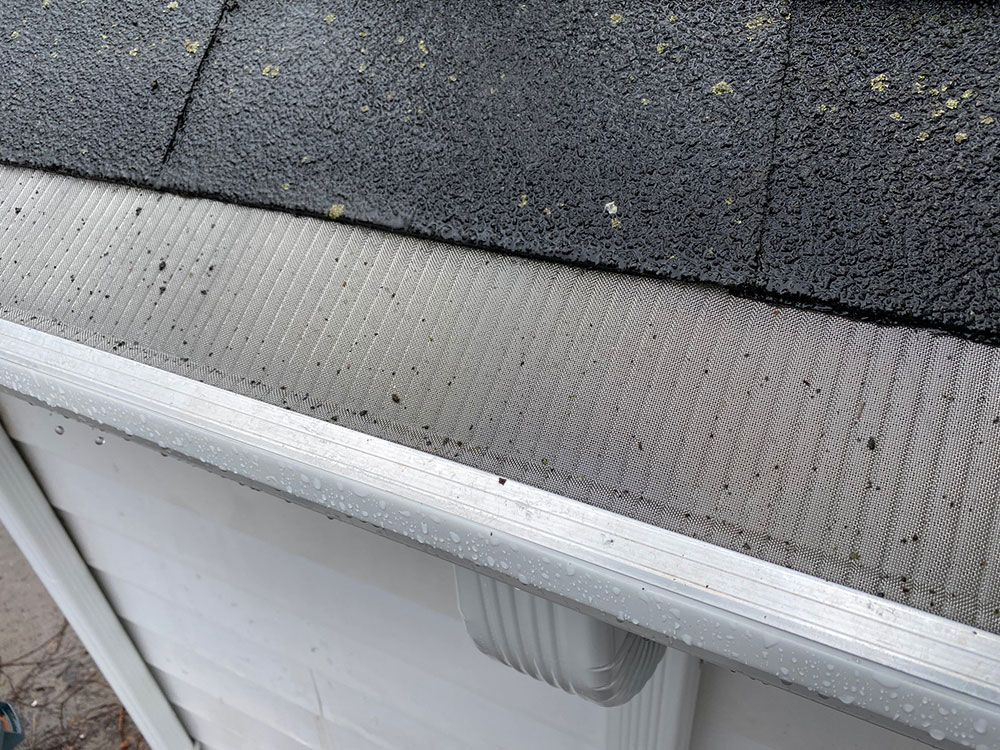
Easy-on is a medium density micro mesh gutter guard. It is comprised of 3-parts, including an upper piece of metal that slides under the first course of shingles, a screen middle section, and a lower strip of aluminum that secures to the front lip of the gutter.
Visually, Easy-on is very similar in appearance to LeafLock. Its screen ribbing is a bit more pronounced and the screen weave is possibly a bit tighter. From a distance, the two products look virtually identical to one another.
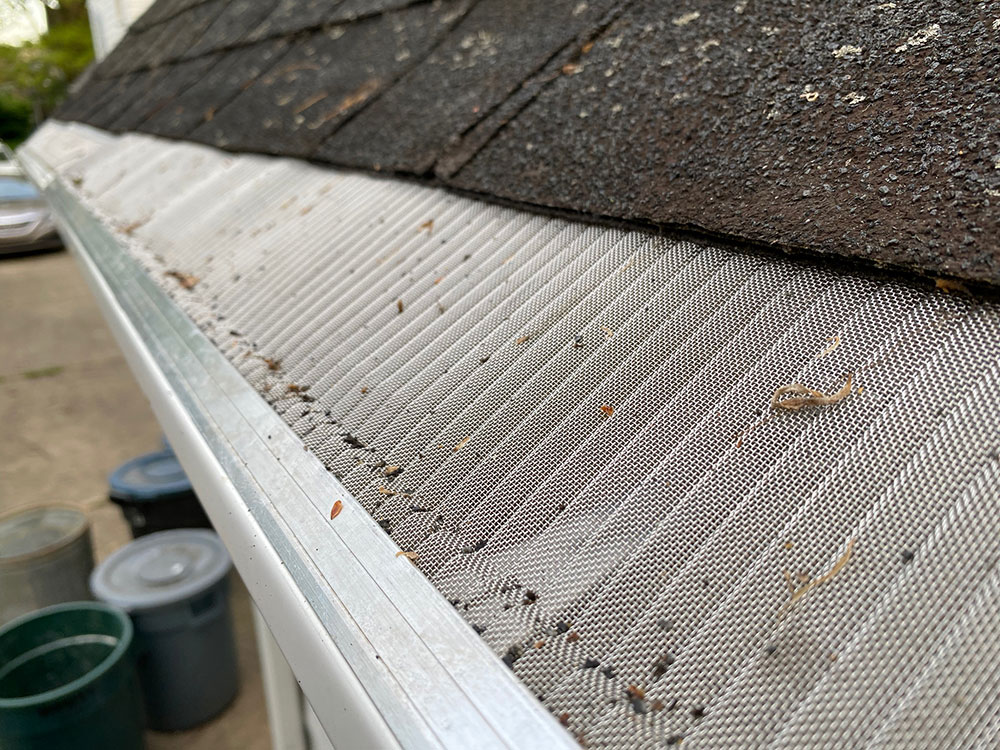
On the underside, Easy-on does not include the downward metal flange that is standard issue on most other micro mesh gutter guard systems. The downward flange is used as a wall, so-to-speak, that prevents water from wicking between the metal gutter guard frame and the gutter lip.
Testing location: North side gutters
Screen Mesh/Clean Mesh
SEMCO Metals is best known for manufacturing Gutter Helmet, a popular, dealer installed, solid gutter cover that has been on the market for several decades. In more recent times, Semco has manufactured two virtually identical products known as Screen Mesh and Clean Mesh. For the purpose of this test, we’ll refer to it as Clean Mesh, since this is what we have called it in videos.
The only difference between the two products is Screen Mesh is a panel that installs under the shingles and Clean Mesh has an upper rear flange that secures to the fascia board within the gutter itself. Other than the length of the metal at the rear end of the gutter guard, the screen and panel design are identical.
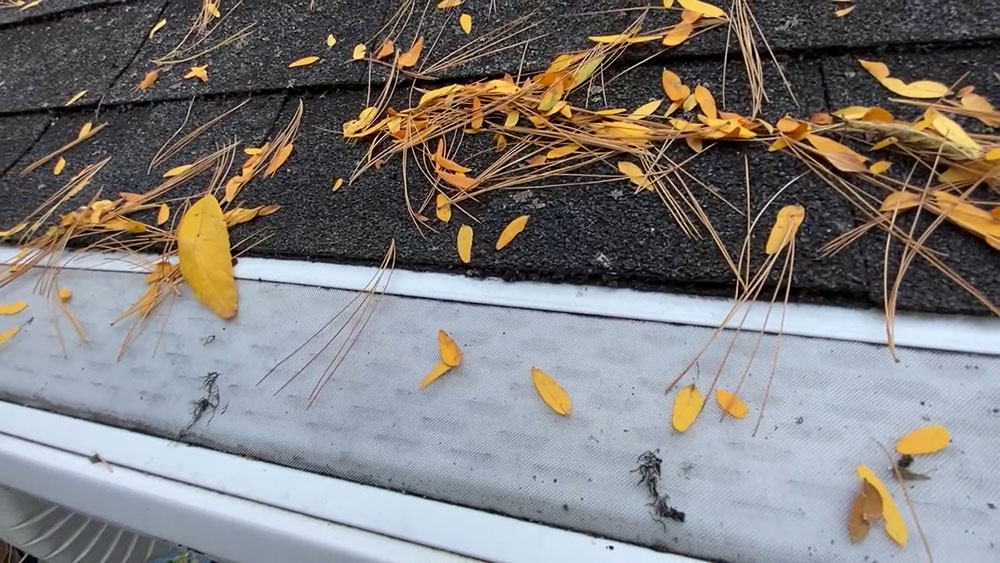
The panels range from 4-feet to 5-feet in length and are approximately 8” wide. The generous width allows the guards to easily slide under shingles whether it’s being installed on a 5” or 6” gutter. The frame is a single piece of roll formed aluminum. Between the rear panel that slides under the shingles and the front portion of the frame that hooks to the gutter’s front lip, sits a series of upward louvres.
A medium density micro mesh screen is seam welded and crimped into place during the manufacturing process. The screen sits on top of the louvres. The screen openings are small enough to keep out leaves and debris – including most shingle granules – but large enough to filter water through the screen openings.
The louvres are raised towards the screen and face towards the rear of the gutter guard so that they can capture water as it flows through the screen. The louvres are spaced in a staggered pattern, under the screen and across each panel. The screen is cut flush with the ends of the panels and the panels simply butt up against each other.
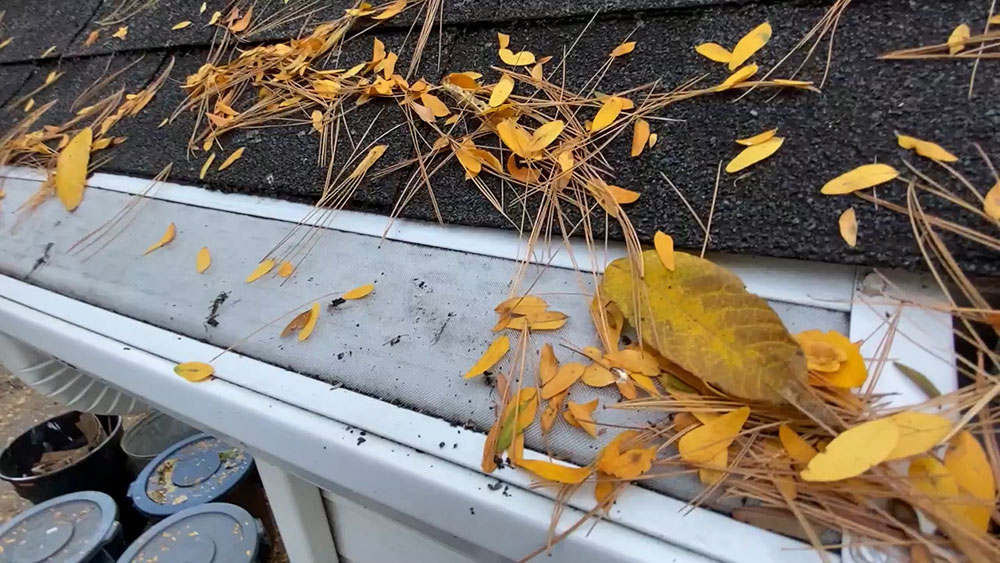
At the transition between the front metal frame and the screen in a series of weep holes that are punched out of the aluminum panel. The weep holes act as the last line of defense for water to drop into the gutter from the top side of the panel. The front of each panel is secured to the gutter lip with 3 ½” self-tapping screws.
Clean Mesh and its sister product, Screen Mesh, are available in several colors, including white, brown, and mill finish. They can be found online and are also available a big box home improvement stores such as Menard’s.
Testing location: North side gutters
GutterGlove Pro
An aluminum extruded version of LeafFilter, GutterGlove Pro was deemed a near identical copy of LeafFilter by the US Patent and Trademark Office (USPTO). I won’t get into the specifics of what the overlap is between the two products, but Robert Lenny, who invented GutterGlove Pro, had to try again and again and again to get his patent. If I recall, he made 34 attempts before the UPSTO issued his first patent.
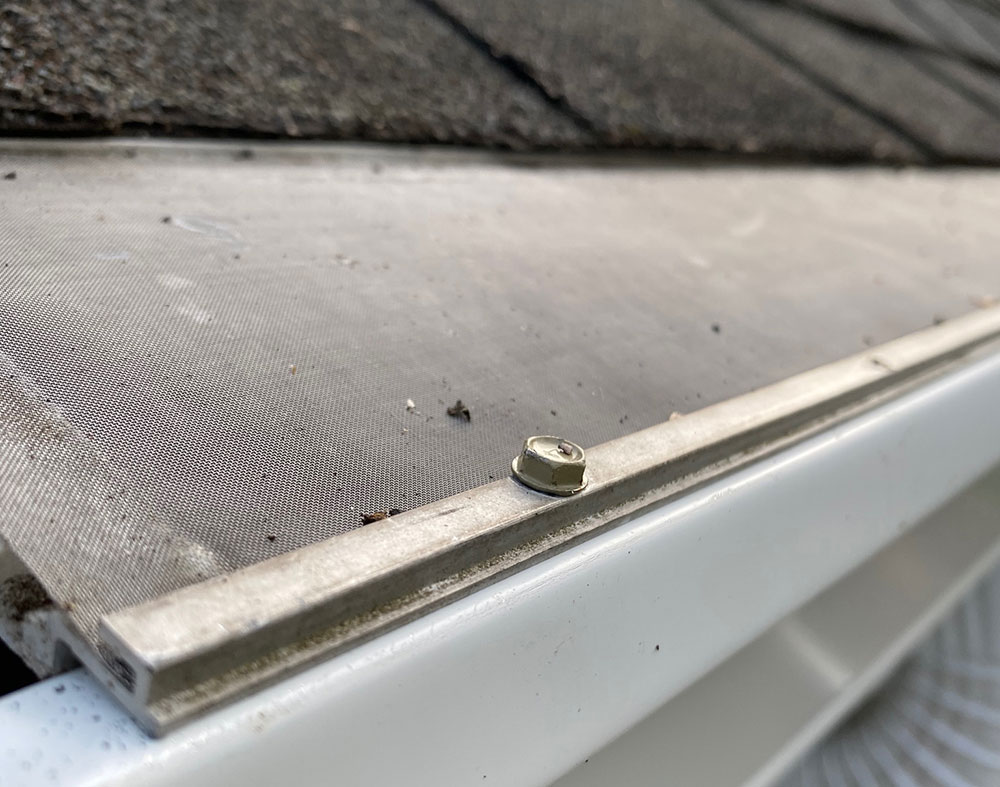
GutterGlove Pro was ranked by Consumer Reports to be the #1 DIY Gutter Guard in its one-and-only gutter guard review in September 2010. The irony then and now is that GutterGlove Pro is not and will never be a do-it-yourself gutter guard. We are also testing another GutterGlove gutter guard, Easy-on, that is an affordable, DIY micro mesh gutter guard.
GutterGlove Pro is one of the sturdiest gutter guards on the market. Made from anodized aluminum, it is machine extruded and extremely rigid. The version we are testing is a two-part system consisting of a single-piece anodized aluminum frame and a 50-micron stainless steel screen. The gutter guard frame measures approximately 7” in width and is available in 4-foot lengths. The screen is held in place by a bead of caulk at the top and bottom of the screen that is applied during the manufacturing process.
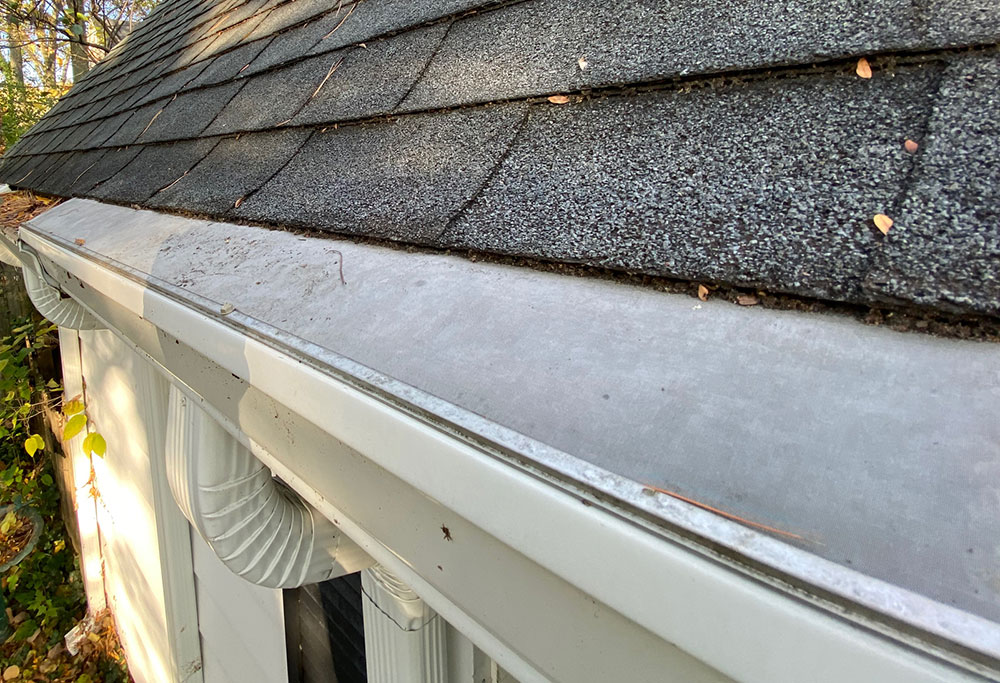
The screen is slightly recessed below the frame and is supported by a series of vertical ribs that form channels for the water to flow through horizontal openings into the gutter below.
GutterGlove Pro can slide under the first course of shingles or the rear panel can be cut so the gutter guard can be mounted to screws against the fascia board. Because the gutter guard is made from extruded aluminum, it has to be cut with an aluminum blade on a circular saw.
GutterGlove Pro is available only in an aluminum mill finish color.
Testing location: South side gutters
Diamond Mesh by Artesian Home Products (aka HydroShield and HomeCraft Gutter Guard):
The embossed, diamond pattern micro mesh gutter guard is offered by a company called HomeCraft Gutter Guards, based in Atlanta, Georgia.
We have been referring to this product as Diamond Mesh in our videos. Since it has been private-labeled and is being sold as both a DIY and professionally installed gutter guard, we thought it was worth taking a look to see how it performs, largely because of its interesting design.
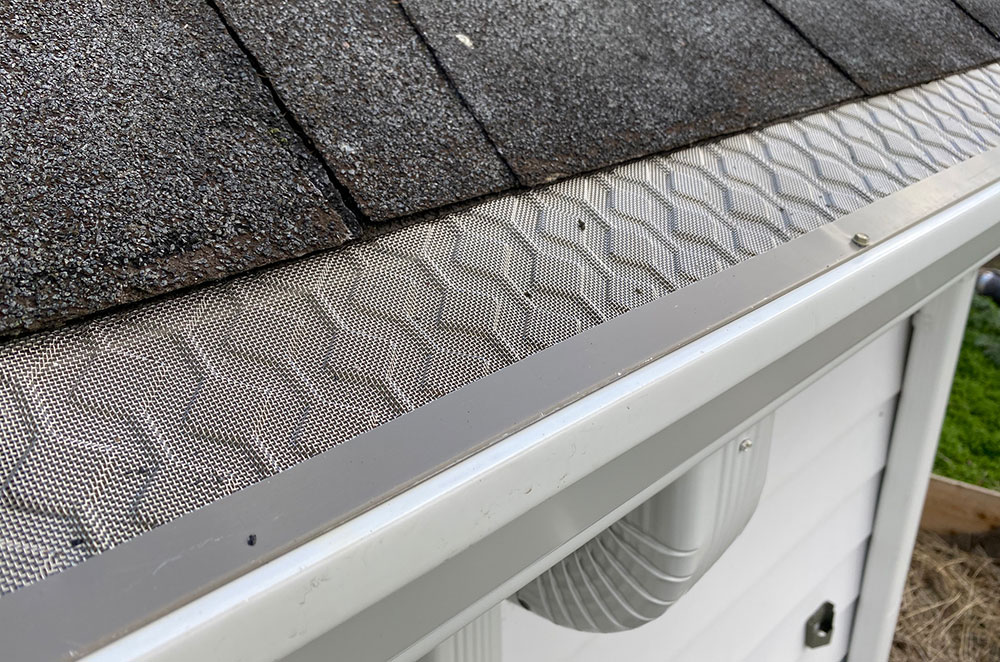
Diamond Mesh is a 3-part system. It comprises of an embossed, diamond shaped screen that creates two elevations. The top elevation is a diamond pattern with lines that extend vertically above and below the diamond shape. The lower elevation forms channels that are created from embossing the screen.
A forward piece of powder coated aluminum is crimped onto the front edge of the screen and another flat piece of metal is crimped onto the rear section of the screen. The screen makes up the majority of this gutter guard system and the metal is there simply to provide extra rigidity at the front and rear of the panel.
The rear piece of metal slides under the first course of shingles. The version we have fits both 5” and 6-inch gutters. There are versions available online that have a rear upward flange that attaches to the fascia board. That style is available in 5” and 6” sizes.
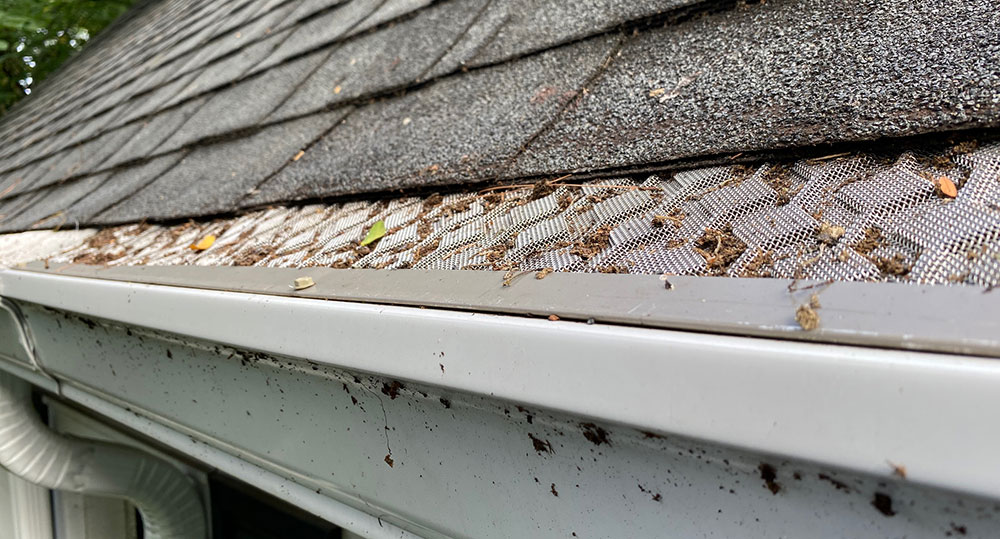
The unusual screen shape is what first caught our eye, and we suspect is what attracts homeowners to it. It’s a considerably more rigid screen than those available from MasterShield, LeafFilter and Gutter Glove. The sheer strength of the screen is what allows the gutter guard to span across the gutter without a supporting framework.
The piece of metal that connects to the gutter lip also has a downward flange on the interior edge of the gutter to help drive water into the gutter as the water washes across the screen.
While the majority of this gutter guard is comprised of screen, we believe the powder coated aluminum frame is available in different colors. The color we’re testing is clay with a stainless-steel screen.
Testing location: South side gutters
LeaFree Solid Gutter Cover
No gutter guard test would be complete without a solid gutter cover. Originally patented in 1908, this is truly the granddaddy of gutter protection systems. Popularized in the 1980s and 1990s by LeafGuard and GutterHelmet, the technology has been installed on millions of homes worldwide. Its popularity persists but is waning due to the growing availability of micro mesh gutter guards.
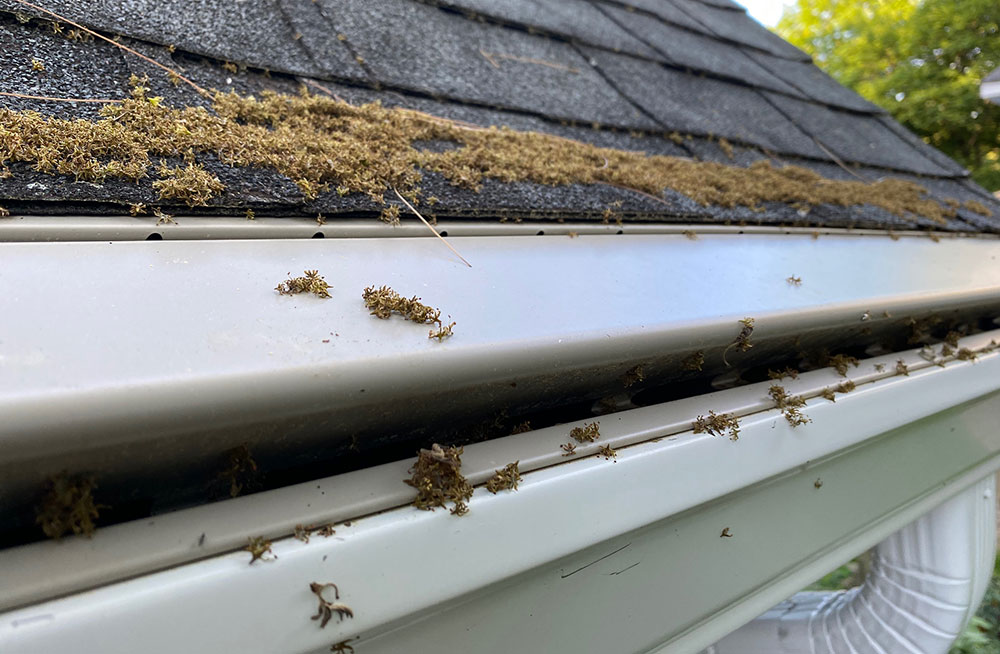
We selected LeaFree for this test because it is a solid gutter guard that can either be professionally installed or sold directly to homeowners. We’re familiar with LeaFree because we have sold it since 2011.
LeaFree is a .024-gauge aluminum solid gutter cover that is designed to slide up under the first course of shingles. It has 2 channels to accept water. The first channel runs horizontally across the top of the panel. Comprised of a series of weep holes, this channel captures small amounts of water as it washes across the gutter guard surface. More importantly, it prevents water from wicking under the shingles.
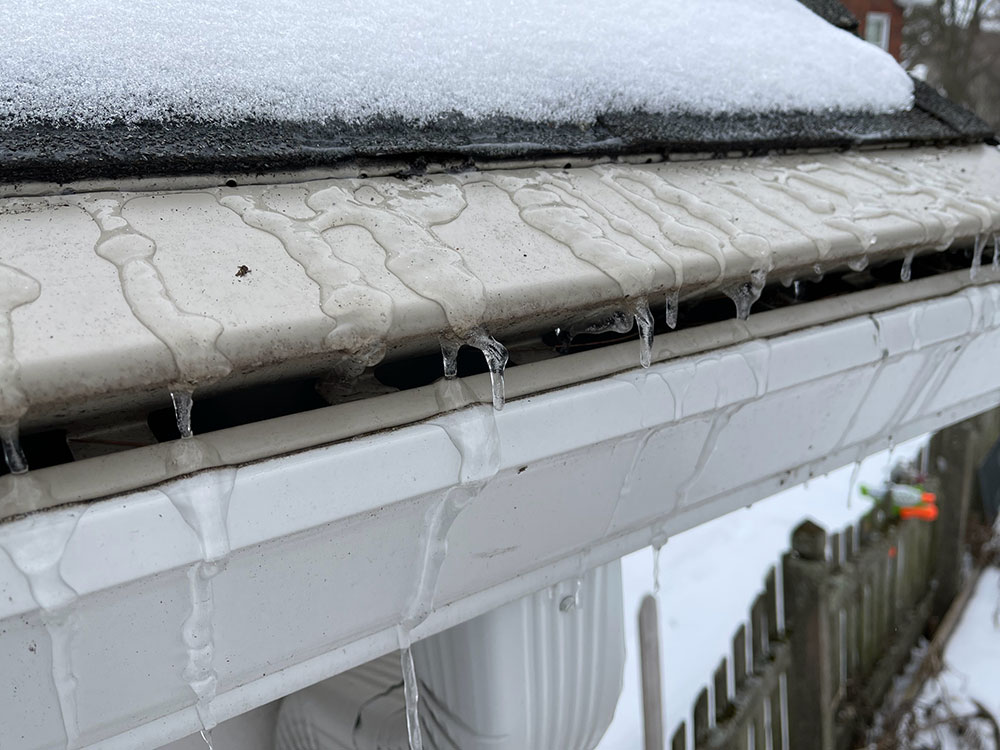
The second channel is the primary opening into the gutter guard. It is approximately an index finger wide. The panel connects to the front lip of the gutter with a flange system that is integrated into the main panel by a series of vertical supports. The gutter guard then screws to the front lip to keep it securely attached to the gutters. Each panel has a male and female connector that interlocks each panel into the next.
LeaFree offers hi-flow panels with a series of horizontal slots on top of the panels to capture more water as it flows over the gutter guard’s surface. They offer accessories such as inside corner pieces for fast moving water and factory cut end caps that will keep birds, squirrels and other critters out of the gutters.
LeaFree is available in 15 popular colors and solid copper.
Testing location: South side gutters
Let's get started!
There you have it. Nine gutter guards in 12 different slots. Three gutter guards are featured on both sides of the garage and another 6 gutter guards are located on either the north or south side of the garage. We’re testing 8 micro mesh gutter guards and 1 solid gutter cover.
The testing began in late-March 2020 and will continue until March 2021, at which time the gutter guards will be ranked, and a final analysis will be published.
Do you own any of the gutter guards featured in our test? How well do they work for you? What do you like and dislike about your gutter guards? Are there any specific gutter guards you’d like to see us test? If so, let us know!
Are you in the market for new gutter guards? Be sure to follow our testing videos on YouTube so you can find the best gutter guard for your environment and budget.




